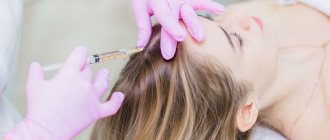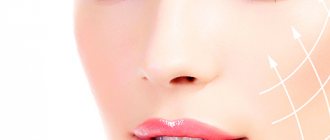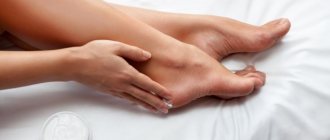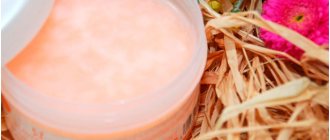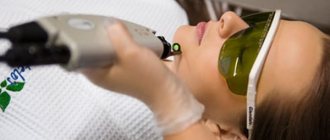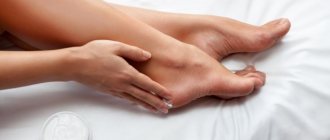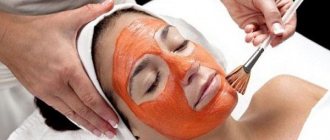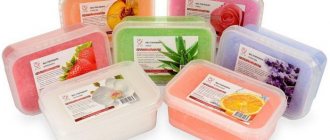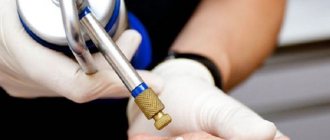- Indications for the procedure
- Contraindications to the procedure
- Cold massage: technique
- Expected result: renewed clean skin
- How many facial cryomassage procedures will be required?
- Rehabilitation period
- Cost of cryomassage
Facial cryomassage is a cosmetic procedure based on short-term exposure of the skin to ultra-low temperatures. Contact with cooled nitrogen vapor causes an instant reaction of skin receptors: a microspasm occurs, and then the walls of the blood vessels expand. Due to this, metabolism increases, lymphatic drainage improves, and skin regeneration accelerates. Cold also relieves swelling and reduces inflammation.
The advantage of facial cryomassage with liquid nitrogen is the absence of direct contact. There is always an air gap between the applicator and the skin, so the procedure is suitable for sensitive skin.
Cold massage: technique
The massage is carried out using an applicator that is periodically immersed in liquid nitrogen. Cryomassage can also be performed using hardware. It is easier for a doctor to perform a hardware procedure, since nitrogen is supplied automatically, but with a manual technique, the effect can be adjusted and adjusted to the characteristics of the skin.
The applicator moves along the massage lines. In this case, constant rotational movements are performed. In problem areas, a targeted effect (cryodestruction) is possible - the applicator is held in place for up to 30 seconds.
Short-term cold exposure eliminates excess oil on the face and removes the stratum corneum of the skin, providing a light peeling effect. Spot treatment removes post-acne and acne.
Finally, a moisturizing and regenerating care product is applied to the skin.
Advantages and disadvantages of the method
Cryodestruction, like any other method of minimally invasive treatment of skin tumors, has its advantages and disadvantages. Removal of warts and moles with liquid nitrogen can only be carried out in a medical facility. If the method is used incorrectly, the risk of scarring and other dangerous complications increases.
The main advantages of removing tumors with liquid nitrogen:
- high efficiency;
- the ability to burn with liquid nitrogen repeatedly;
- no bleeding;
- low risk of complications;
- no need to use anesthesia.
It is most effective to burn out warts and papillomas with liquid nitrogen when there are a limited number of tumors, when they have not reached a large size and do not disrupt the blood circulation and nutrition of surrounding tissues.
Cryodestruction of moles, warts and papillomas also has its disadvantages:
- inability to conduct further histological examination and assess the nature of the tumor;
- the need for repeated sessions, especially with large tumors;
- maintaining the risk of scarring.
The high level of professionalism of the specialists at the Healthy Family clinic, which is located in Moscow, helps to minimize the disadvantages and risks of the procedure. We maintain maximum comfort of service so that every patient feels safe during diagnosis and treatment.
Expected result: renewed clean skin
After cryomassage of facial skin, metabolic processes improve, the removal of waste and toxins is accelerated, a slight lifting effect is provided, skin turgor increases, and inflammation is reduced. The procedure also has an immunomodulatory effect.
Cryomassage with liquid nitrogen promotes:
- preventing age-related changes and slowing down skin aging;
- eliminating small facial wrinkles and improving blood circulation;
- narrowing pores and reducing skin oiliness;
- reduction of acne;
- lightening areas of skin with hyperpigmentation;
- facelift;
- eliminating puffiness and dark circles under the eyes;
- exfoliation of dead cells.
Indications for use
We list the main diseases for which cryotherapy with liquid nitrogen is indicated:
- Dermatological pathologies - acne/post-acne, warts, eczema, seborrhea, dermatitis of various etiologies, psoriasis.
- Neurological diseases - multiple sclerosis, migraines, pain syndromes, cerebrovascular accident.
- Gynecological diseases - cervical dysplasia and erosion, condylomas, infertility, menopause.
- Otorhinolaryngology - vasomotor rhinitis, adenoiditis, chronic tonsillitis, palate hypertrophy.
- Ophthalmology - herpetic keratitis, chalazion, dystrophic changes in the cornea.
- Rheumatology - arthritis, arthrosis, rheumatism.
- Traumatology - diseases of joints and ligaments, recovery from injuries.
- Oncology - various malignant neoplasms, including bone tumors.
- Physical and nervous exhaustion, sleep problems.
This cryogenic liquid is also used for storing stem cells and other biological materials - the cryopreservation method.
Rehabilitation period
In the first days after the procedure, redness, swelling and slight discomfort may be observed. This is a normal reaction. During this period, it is better not to use decorative cosmetics and wash only with non-aggressive products, so as not to irritate the skin even more.
After targeted treatment, crusts form on problem areas. There is no need to pick them out and soak them. They will go away on their own 1-2 days after the procedure.
If a treatment course is being carried out, it is recommended not to wear makeup during the course. If this is not possible, then you should give preference to cosmetics with dispensers. Sponges, brushes and jars from which you need to pick up products with your fingers should be avoided, as they can spread bacteria.
Exposure to cold reduces the protective function of the epidermis, so during the recovery period it is necessary to provide the skin with rest and protection.
Within 14 days after the procedure you must:
- Apply UV protection cream to your skin daily;
- moisturize the skin morning and evening with cream or serum;
- do not irritate the skin with aggressive agents (exclude tonics and lotions containing alcohol);
- do not steam the skin in a bathhouse, sauna, or bath;
- do not sunbathe (tanning can cause hyperpigmentation).
In Moscow, you can now make an appointment for cryomassage and other cosmetic procedures at Dr. Kurenkov’s clinic. This is great news for our current and future patients!
Removal of benign tumors with liquid nitrogen
Before removing papillomas, warts and moles with liquid nitrogen, clinic specialists conduct an examination and prescribe a diagnosis. Based on the results of the examination, you can select a suitable treatment method. Warts are most often benign. But a dermatologist must verify this.
Fibroepithelial polyps
A fibroepithelial polyp or papilloma is a benign tumor that looks like a wart. It rises above the level of the skin and has a wide base or a thin stalk. Most often, the polyp appears on the skin of the neck, has a brown or flesh-colored tint and an elongated shape. Such papillomas are also called filamentous. They occur frequently, which indicates the widespread distribution of human papillomavirus infection among the population.
Threaded polyps are often damaged during bathing, shaving, and wearing tight clothing. In this case, the tumors can bleed and become inflamed. And any injury to viral papilloma increases the risk of tissue malignancy, especially under the influence of ultraviolet radiation. In addition, a polyp on open areas of the body attracts unnecessary attention and looks unaesthetic. It is better to remove it using liquid nitrogen. Threaded papillomas can be easily removed through cryodestruction.
Seborrheic keratosis
Seborrheic keratosis (basal cell papilloma, senile wart) often occurs in older people. In young patients, pathology rarely appears. The disease is associated with the chronic course of human papillomavirus infection. The papilloma virus enters the human body initially at an early age. During life, activation of the pathogen may occur with the formation of viral warts.
Basal cell papilloma is characterized by slow growth. First, an inconspicuous brown spot appears on the skin, which can grow up to 5 cm or more. On top, the neoplasm has easily merging scales. The risk of seborrheic keratosis becoming malignant is low. But this does not mean that the disease cannot be treated. Surgical methods for removing tumors whose growth is associated with HPV are necessary. Without this, keratosis will progress, significantly reducing the patient’s quality of life and causing undesirable health consequences.
Removing warts with liquid nitrogen
Warts are benign neoplasms caused by the human papillomavirus. The risk of malignancy still remains, but for certain types of HPV. Warts grow on any part of the body, often appearing on the hands, soles, and in the area of natural folds of the body.
If papillomavirus growths appear on the skin and mucous membranes, you must contact a dermatologist to undergo a comprehensive examination and determine the type of active virus. Some types of HPV are prone to malignancy.
Vulgar warts
Vulgar warts most often occur in young and middle-aged people. The disease often progresses in children, who often damage the skin of their hands, and HPV easily penetrates through cracks and cuts and causes the activation of human papillomavirus infection. Vulgar or simple warts are usually small in size. They are found in groups, most often on the outside of the fingers.
If, after removal with liquid nitrogen, warts appear again, it is necessary to carry out complex antiviral therapy to stop the multiplication of papillomavirus in the child’s body. But any systemic drugs can be given to children only with the permission of a qualified specialist.
Flat warts
Flat warts are flesh-colored and practically do not rise above the skin. Small nodules can be easily removed with liquid nitrogen. The technique does not contribute to the spread of infection to healthy tissue and is not accompanied by bleeding. Flat warts can appear on the face and body. They have a benign course and are not prone to malignancy. In our clinic they will be removed in just a few minutes.
Genital warts or genital warts
Genital warts or genital warts are transmitted through unprotected intimate contact from an infected partner. The new growths have a bizarre shape, similar to cauliflower inflorescences. They can ulcerate, causing skin infection with the appearance of an unpleasant odor and pathological discharge.
Genital warts can occur due to the proliferation of HPV types 6, 11, 16, 18 and other types, many of which have a relatively high oncogenic risk. That is why experts recommend timely removal of genital warts with liquid nitrogen and at the same time using antiviral drug treatment. It is necessary to examine all sexual partners, even if they do not show signs of the disease.
It is recommended to take a comprehensive approach to the fight against human papillomavirus infection and conditionally benign neoplasms on the skin and mucous membranes. In this case, it will be possible to stop further reproduction of HPV and avoid regular relapses.
Cost of cryomassage
| Cryomassage and cryodestruction of benign neoplasms |
| Service code | Service name | Number of services | Price |
| A24.01.004.001 | Cryodestruction of skin: removal of papillomas, keratomas, warts, condylomas (up to 0.5 cm 1 element) Code: A24.01.004.001 | 1 | 500 ₽ |
| A24.01.004.002 | Cryodestruction of the skin: removal of papillomas, keratomas, warts, condylomas (0.5 - 1.0 cm. 1 element) Code: A24.01.004.002 | 1 | 1 000 ₽ |
| A24.01.004.003 | Cryodestruction of the skin: removal of papillomas, keratomas, warts, condylomas (more than 1.0 cm, 1 element) Code: A24.01.004.003 | 1 | 1 500 ₽ |
| A24.01.005 | Skin cryomassage (1 zone, 1 procedure) Code: A24.01.005 | 1 | 800 ₽ |
Drugs used in cryotherapy
Cryosurgical devices use liquefied gases called cryogenic liquids as coolants. They are safe to use, non-flammable and chemically inactive. Most often used:
- liquid nitrogen with a boiling point - 195.8 o C;
- nitrous oxide with a boiling point - 88.7 o C;
- carbon dioxide with a boiling point - 78.9 o C (3, 7).
Carbon dioxide
“snow paste” is also used in cryotherapy. This is a mixture of dry ice, that is, solid carbon dioxide, with alcohol, ether or acetone (ratio 1:15).
Modern cryosurgery devices use three main methods of reducing temperature, for example through physical phenomena:
- change of state from liquid to gas;
- adiabatic expansion or Joule-Thomson effect;
- thermoelectric effect.
The choice of freezing method depends on the type of lesion and the experience and preference of the dermatologist.
